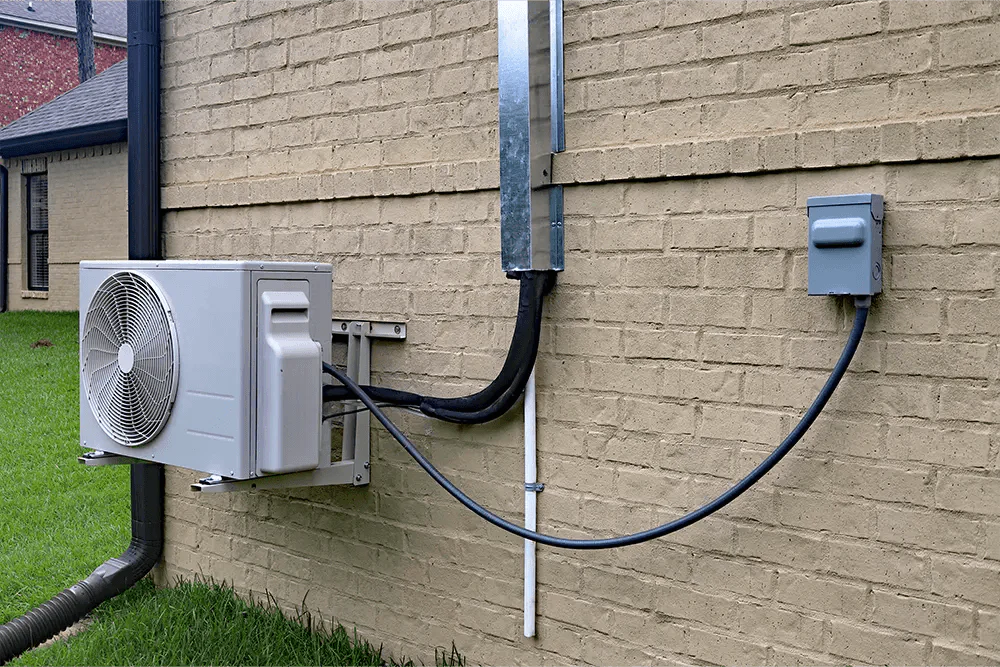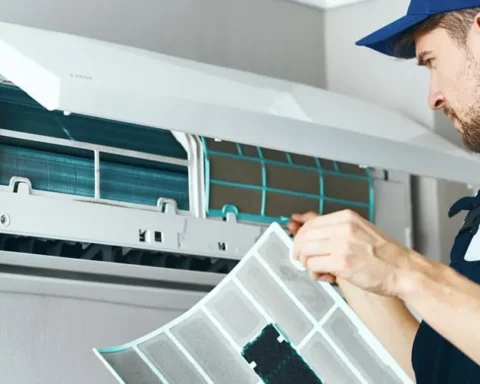Introduction
Split system air conditioners are a popular choice for many homeowners due to their efficiency, ease of installation, and ability to provide both heating and cooling. Understanding how these systems work can help you make informed decisions about their use and maintenance. This blog will explain the working principles of split system air conditioners, including their components, cooling and heating processes, and benefits.
Components of a Split System Air Conditioner
Indoor Unit
The indoor unit is typically mounted on a wall inside the room and is responsible for circulating and cooling (or heating) the indoor air. Key components of the indoor unit include:
- Evaporator Coil: Absorbs heat from the indoor air.
- Air Filter: Removes dust and particles from the air.
- Blower: Circulates the cooled or heated air throughout the room.
Outdoor Unit
The outdoor unit is installed outside the house and dissipates the heat absorbed by the indoor unit. Key components of the outdoor unit include:
- Compressor: Pumps the refrigerant through the system.
- Condenser Coil: Releases absorbed heat to the outside air.
- Fan: Helps dissipate heat by blowing air over the condenser coil.
Refrigerant
The refrigerant is a crucial component that circulates between the indoor and outdoor units, absorbing and releasing heat to cool or heat the indoor air. Common types of refrigerants used include R-410A and R-32.
How a Split System Air Conditioner Works
Cooling Process
Thermostat Activation
When the thermostat detects that the indoor temperature has risen above the desired level, it activates the air conditioning system.
Refrigerant Cycle
The compressor in the outdoor unit pumps the refrigerant through the system. The refrigerant flows from the outdoor unit to the indoor unit.
Heat Absorption
The evaporator coil in the indoor unit absorbs heat from the indoor air. As the warm air passes over the coil, the refrigerant inside absorbs the heat, cooling the air.
Heat Release
The refrigerant, now carrying the absorbed heat, flows back to the outdoor unit where the condenser coil releases the heat to the outside air with the help of the fan.
Air Circulation
The blower in the indoor unit circulates the cooled air back into the room, lowering the indoor temperature to the desired level.
Heating Process (Reverse Cycle)
Reversing Valve Activation
In heating mode, the reversing valve changes the direction of the refrigerant flow.
Heat Absorption
The outdoor unit absorbs heat from the outdoor air, even in cold conditions, using the refrigerant.
Heat Release
The indoor unit releases the absorbed heat into the indoor air through the evaporator coil, warming the room.
Benefits of Split System Air Conditioning
Energy Efficiency
Split system air conditioners are designed to be highly energy-efficient, often featuring inverter technology that adjusts the compressor speed to maintain a consistent temperature, reducing energy consumption.
Zonal Cooling/Heating
These systems allow for zonal cooling or heating, meaning you can control the temperature of individual rooms, which can lead to significant energy savings.
Quiet Operation
Split systems are known for their quiet operation. The noisy components, like the compressor, are located in the outdoor unit, reducing indoor noise levels.
Aesthetic and Space-saving
The indoor units are compact and stylish, blending well with most interior designs without taking up floor space.
Maintenance Tips for Optimal Performance
Regular Cleaning
Regularly clean the air filters and evaporator coils to ensure efficient operation and good air quality. Dust and debris can reduce the system’s efficiency and lead to higher energy bills.
Professional Servicing
It’s essential to have your split system air conditioner professionally serviced at least once a year. Regular servicing ensures that all components are in good working order and helps prevent potential issues. For expert service in Sydney, consider the reliable services offered by Enercell Air Conditioning. You can find more information about their services for Split System Air Conditioning in Sydney.
Proper Usage
Use the system efficiently by setting the thermostat to a comfortable yet energy-saving temperature. Avoid drastic temperature changes, which can put unnecessary strain on the system.
Conclusion
Understanding how split system air conditioners work can help you use and maintain them more effectively. These systems provide energy-efficient, zonal cooling and heating, making them an excellent choice for many homes. By keeping up with regular maintenance and using the system efficiently, you can enjoy comfortable indoor temperatures year-round.
Keep an eye for more news & updates on EssentialTribune.Com!









